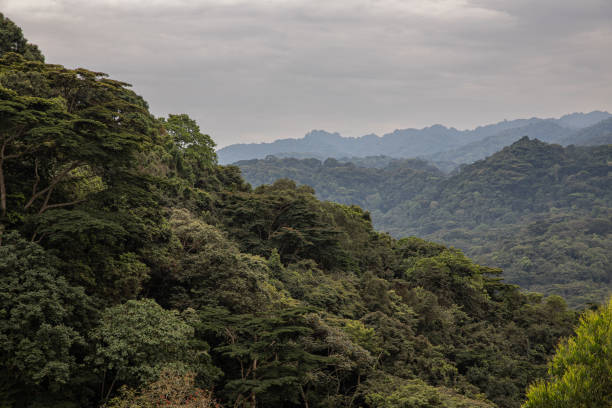
Sustainable Tourism refers to practices in and by the tourism industry taking into full account of its current and future economic, social and environmental impacts not ignoring the needs of visitors, the industry, the environment and host communities. It is a form of tourism that seeks to maximize the positive impacts of tourism while minimizing its negative effects on the environment, society, and economy. It is based on principles of sustainability, which aim to meet the needs of present tourists and host communities while preserving and enhancing opportunities for the future.
Uganda is known for its rain forest, savannahs, avian richness, mountains and striking landscapes. From Bwindi forest, Mgahinga, Budongo forest, Kibale forests; lakes Victoria, Albert, Edward, Bunyonyi; mountains Rwenzori, Elgon, Moroto, Stanley, plants, trees to the butterflies, Uganda is blessed with enough natural beauty to give one reason for sustainable tourism. The negative impacts of tourism must be mitigated to ensure longevity of enjoying what nature has to offer.
The sector’s business activities (accommodation, transport, handicraft production and tour operations) depend on the contributions of interrelated value chains which means that sustainable tourism depends on several efforts with potential for multiplier effects as mentioned below;
Promote and ensure the conservation of wildlife and diversity using the approach that involves various stakeholders, the government, local communities, NGOs, businesses and individuals. Through protecting the areas, habitats and wildlife engaging the community by encouraging them to use practices that are ecofriendly to minimize habitat destruction and maintain the ecosystem integrity. Cultivate collaborations among all stakeholders to address the transboundary conservation challenges in order to promote global biodiversity conservation initiatives.
Enable communities and the sector at large to adapt to the impacts of climate change while securing valuable assets which requires strategies that address both mitigation and adaptation measures. Risk management, planning and diversification of tourism offerings to reduce on reliance on assets that are more susceptible to climate change impacts and promote alternatives that are less vulnerable to climate related risks. Invest in resilient infrastructure and building designs that can withstand climate related hazards like floods and storms. Financial investments, technical assistance and regulatory framework can be availed to enable climate-smart practices.
Improve the resource efficiency of the tourism sector by responsibly procuring food, beverages, and energy with construction materials. Through sustainable food sourcing, water conservation, energy efficiency and sustainable construction and building materials will ensure that wastage is curbed as the given options will reduce emissions, water and energy consumption
Reducing waste and improving waste management is an essential aspect which aims to minimize environmental impacts and promote sustainability. Encourage people to use minimal packaging and opt for reusable containers, composting programs to turn waste into use, provide clearly labelled bins, and encourage creativity by repurposing materials rather than discarding them. All these will help to minimize the environmental footprint, conserve natural resources and promote sustainable practices that benefit both the environment local communities.
Sustainable tourism requires ongoing monitoring, evaluation, and adaptation to ensure that tourism activities remain environmentally, socially, and economically sustainable over time and this involves learning from experiences and best practices, and continuously improving tourism management and operations. Embracing sustainable tourism principles, we can harness the potential of tourism as a tool for conservation, economic development, and cultural preservation while safeguarding its natural and cultural heritage for future generations.
Benefits of Sustainable Tourism
Sustainable tourism encourages regional integration with countries that consider practice sustainable tourism and this has increased regional market which in long run increases the flow of tourists who choose Uganda as their travel destination.
The practice of sustainable tourism is such a fundamental action which helps in saving the environmental natural resources for example wildlife, birds, lakes, forests, mountains to mention but a few for both current generation and the coming generations. This will enhance high flow of tourists in Uganda and this will increase foreign exchange for the country.
Sustainable tourism is a key player in discovering natural resource potentials and how these natural resources can be put to positive use to benefit the economy of the current and the future of the country. Therefore the practice is such a beautiful action that will benefit the current and the future tourism of the country.
Sustainable tourism helps in joining the gap between the local communities and the tourism industry and this increases sensitization of the tourism sector which result into local communities safe guarding the natural resources which help in improving tourism activities both now and the future.
